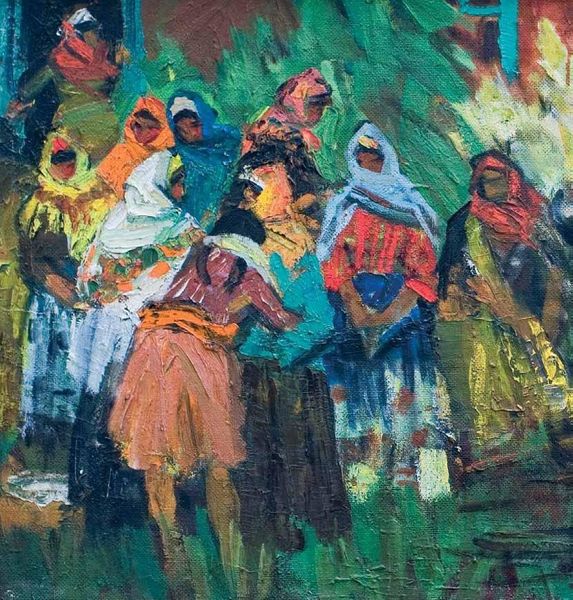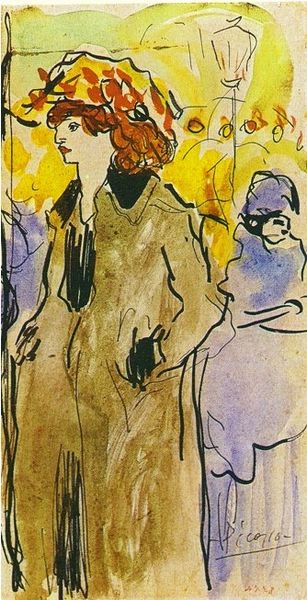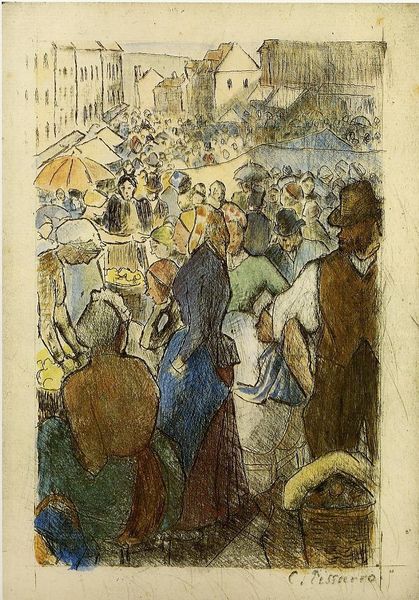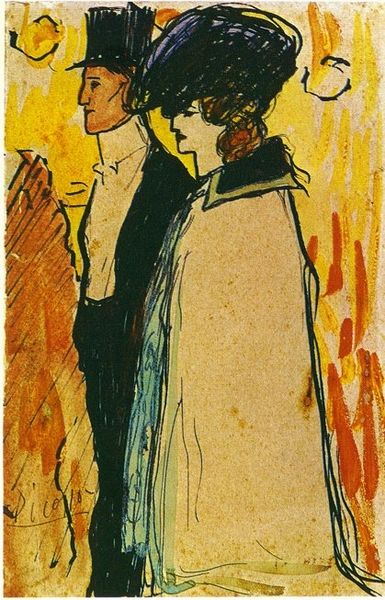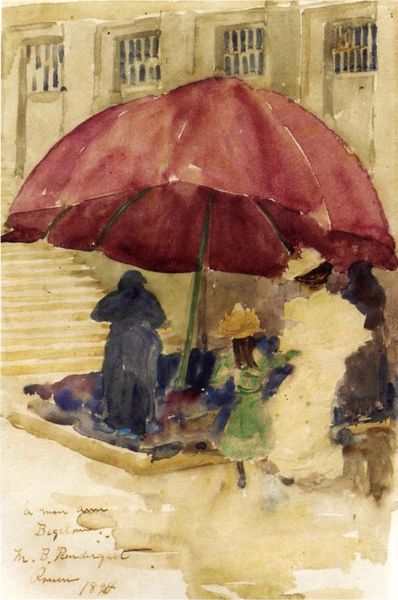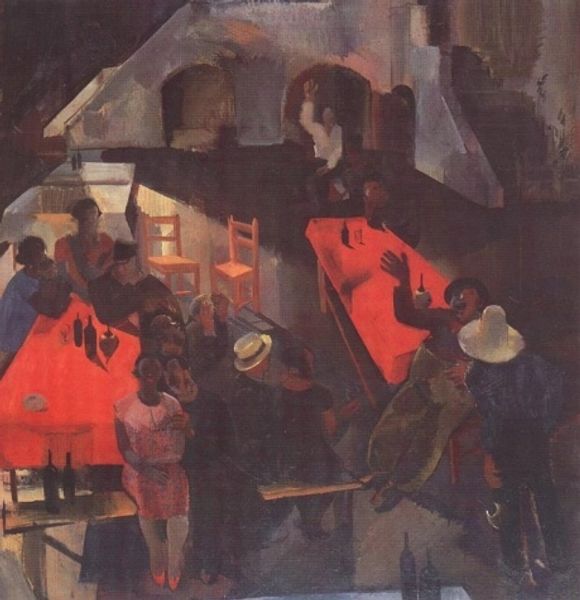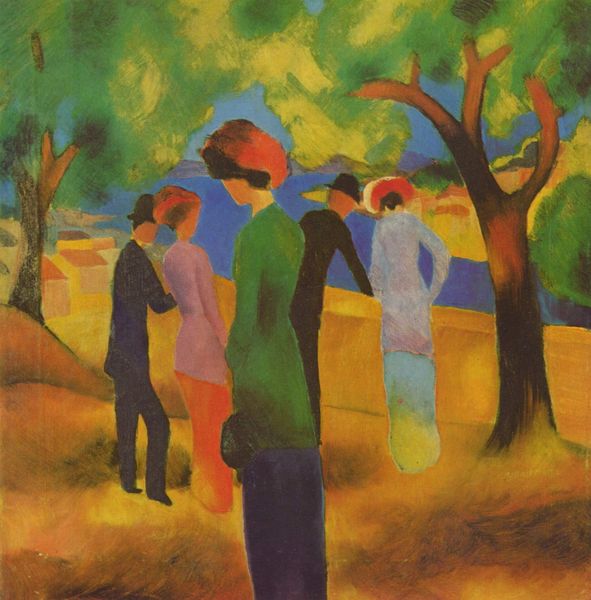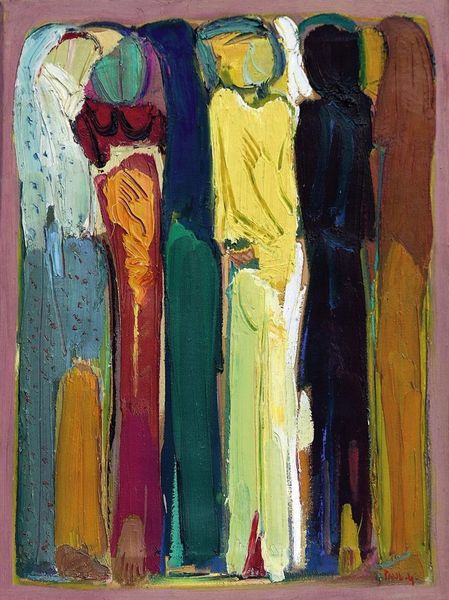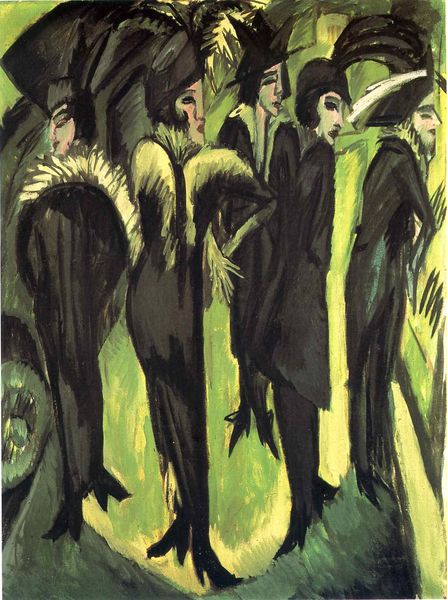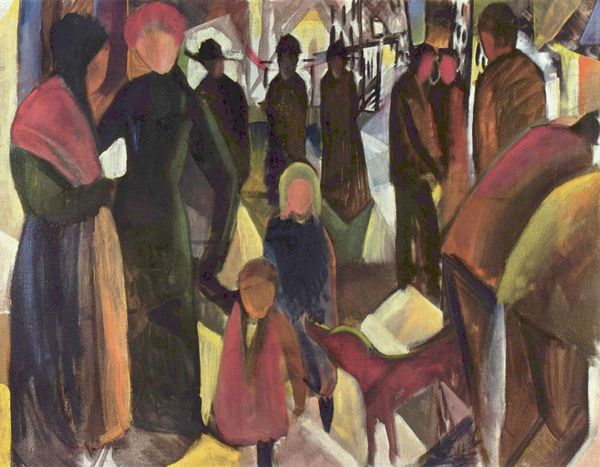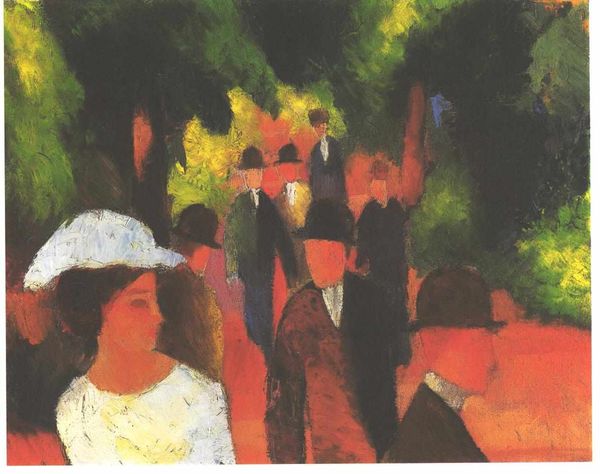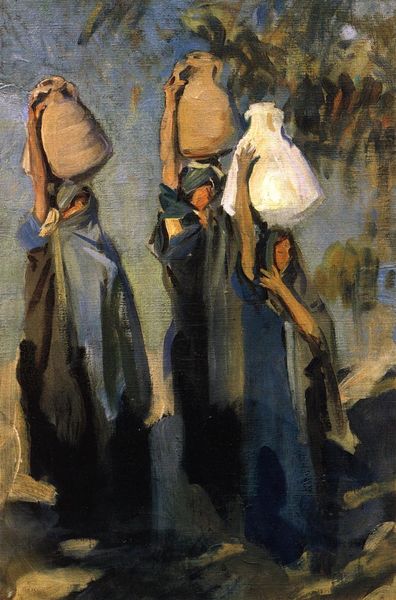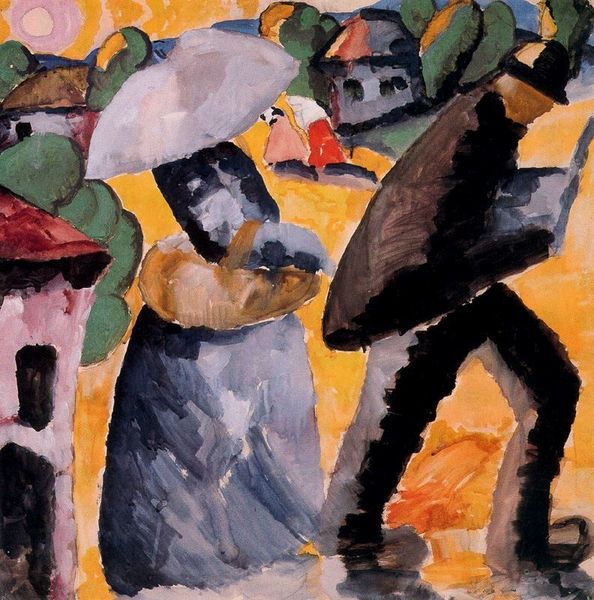
Scheveningen Women and Other People Under Umbrellas 1882
0:00
0:00
vincentvangogh
Gemeentemuseum den Haag, Hague, Netherlands
watercolor
#
gouache
#
impressionism
#
landscape
#
figuration
#
watercolor
#
underpainting
#
genre-painting
#
mixed media
#
watercolor
Copyright: Public domain
Vincent van Gogh made this watercolor of Scheveningen women under umbrellas in the Netherlands in 1882. Van Gogh's work provides a window into the social and cultural landscape of the late 19th century. Here, he depicts figures shrouded in cloaks and umbrellas, their forms softened by the rain. Scheveningen was and still is a fishing village near The Hague, where Van Gogh lived at the time. The women’s attire indicates they belonged to a religious group of lower social class. In a time of rapid modernization, they stood apart as pillars of traditional life. Note the artist's formal experimentation with loose brushstrokes and muted colors which creates an atmosphere of quiet contemplation. The existence of this artwork is very telling about the role of the artist in relation to the social and political context. To fully appreciate van Gogh's art, we must delve into the rich tapestry of social history, consulting archives, letters, and period documents to illuminate the world that shaped his vision.
Comments
No comments
Be the first to comment and join the conversation on the ultimate creative platform.
